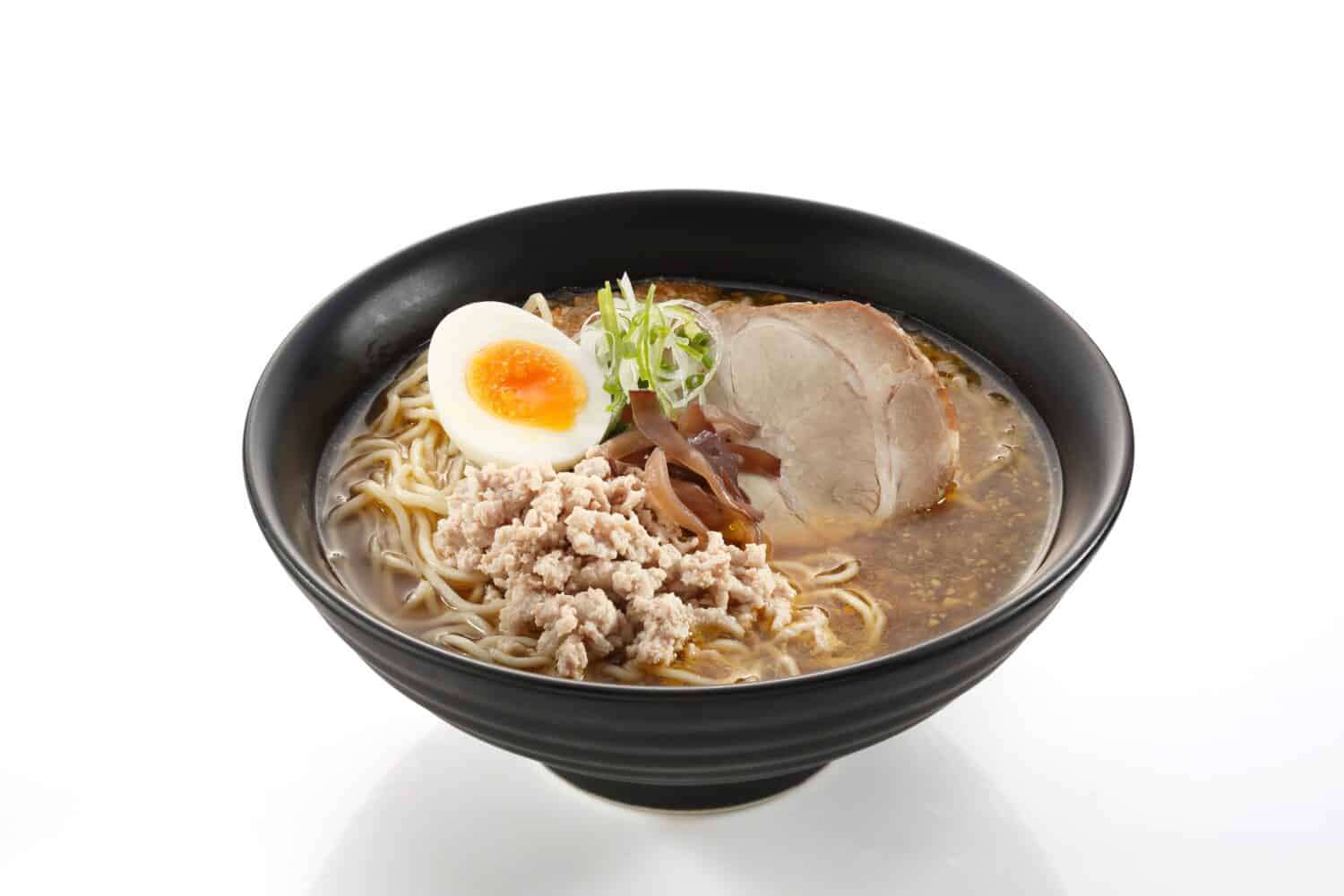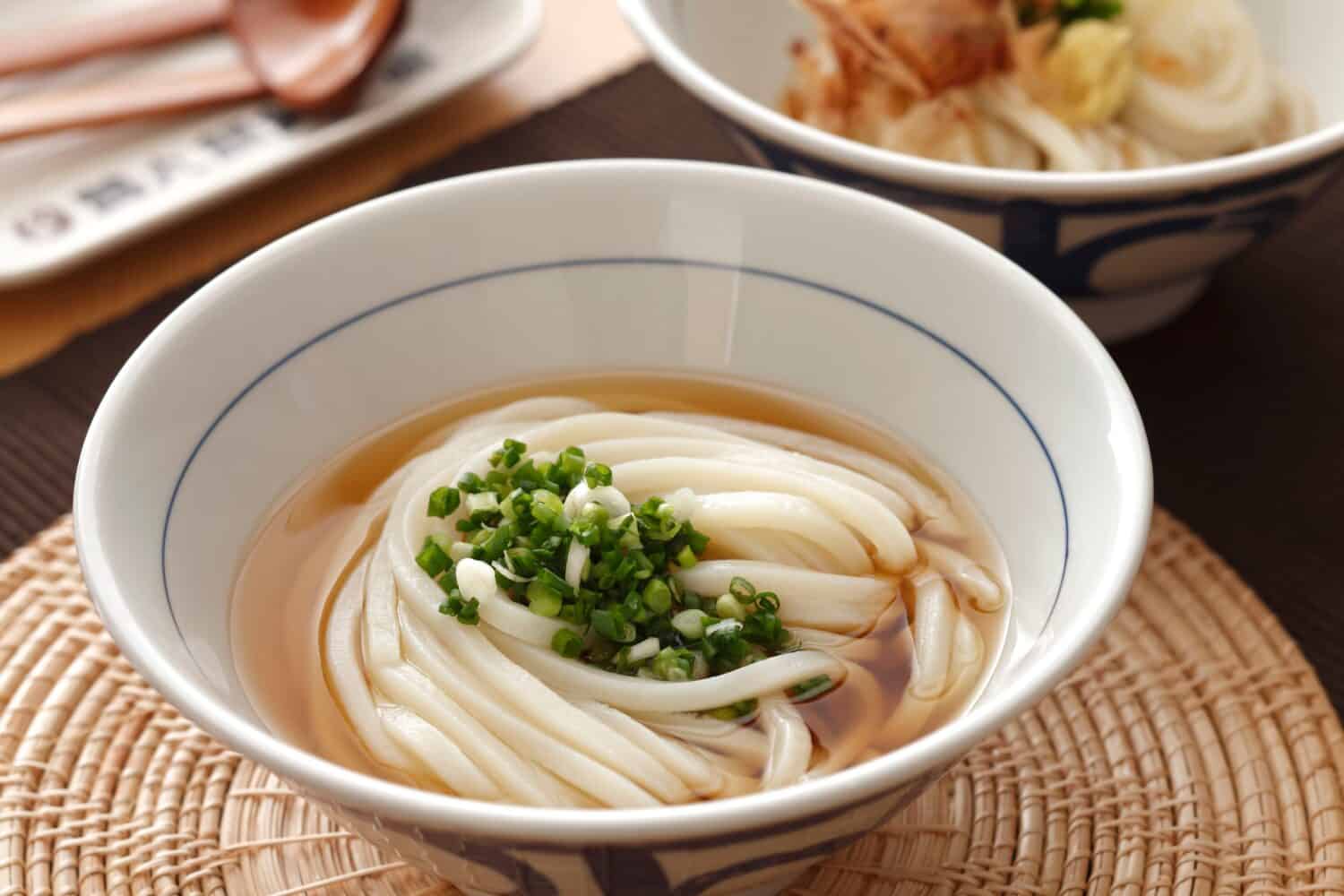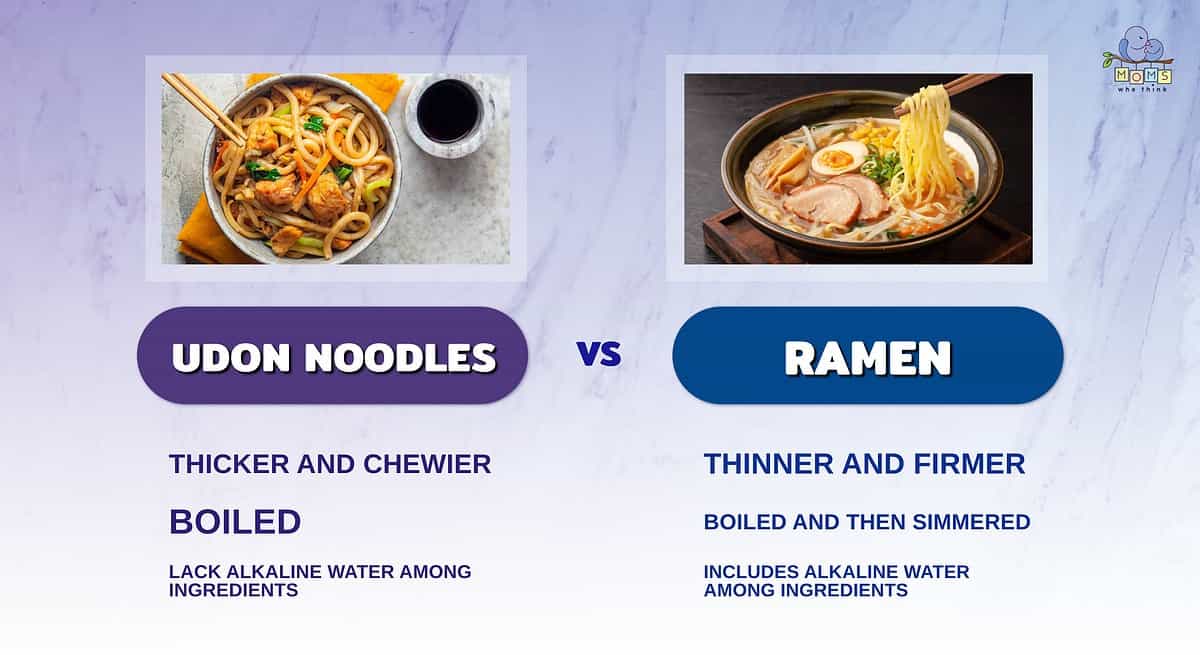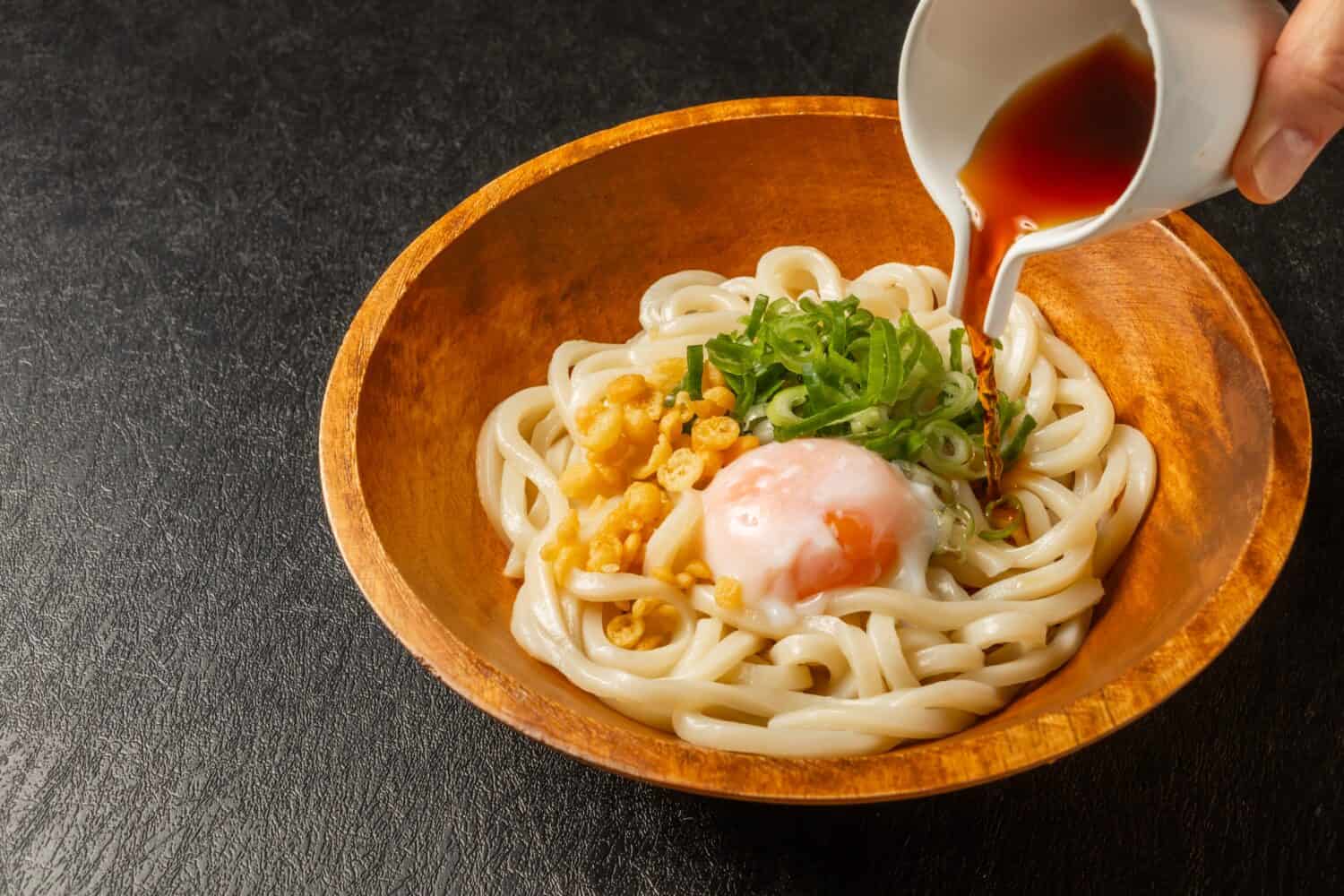Most of you have a favorite local ramen spot you frequent on weekday nights when you're too busy to cook. And others may have a favorite udon spot when you're looking for a meal that is both warm and filling. Both are kinds of Japanese dishes, but they also have many key differences.
What exactly are the differences between the two? Do they have different flavor profiles?
Let's dig into the key differences between these scrumptious options.
- The must-have convenient reference guide for every home cook!
- Includes more than 8,000 substitutions for ingredients, cookware, and techniques.
- Save time and money on by avoiding trips to grab that "missing" ingredient you don't really need.
Ramen is made with egg

Udon noodles are vegan, while ramen is not.
©OlgaBombologna/Shutterstock.com
The biggest difference between the two is that udon is vegan while ramen is made with egg, according to Nona Lim. The dish has become one of the most popular dishes in Japan over the past few decades, according to Japan-guide.com.
If you're wondering why ramen has a more yellow flavor, you can attribute it to the egg. Udon noodles, themselves, are not made with any animal product.
The noodles and broth are different

Ramen noodles come in bold flavors.
©Coolscene/Shutterstock.com
Another difference between the two is that ramen noodles are yellow, while udon noodles are paler and more delicate. The former are thinner and typically more wavy, while udon noodles are thicker and straight; they are made from flour, salt, and water.
The broth in ramen noodles is also different than the broth in udon noodles. Ramen's broth is thicker, and udon is more akin to soy sauce. There are, however, many variations within the two categories. Ramen broth could be soy sauce-based, or it could be pork bone broth. Similarly, udon can be served in a variety of ways, from a miso soup to a stir-fry with sauce.
Udon is considered healthier

A meal is prepared at a restaurant.
©Coolscene/Shutterstock.com
Because of these aforementioned differences, udon is considered healthier as it is simpler and its toppings are more pure, like green onions. Ramen toppings tend to be heartier, like pork and eggs.
According to Tasting Table, udon noodles more likely than not originated in China; it wasn't until about 618 to 907 CE that they were introduced to Japan.
- The must-have convenient reference guide for every home cook!
- Includes more than 8,000 substitutions for ingredients, cookware, and techniques.
- Save time and money on by avoiding trips to grab that "missing" ingredient you don't really need.
Fortunately, both are a go-to option for satisfaction, especially on a cold day when you're seeking a comfort meal.
Udon vs. Ramen: Final Thoughts

If you are craving a Japanese dish, you can't go wrong with either udon or ramen. They are delicious meals that hit the spot on a cold day. Even though they may seem similar, they are actually quite different. Here are some of their differences:
- Ramen is made with egg, and udon is vegan.
- Ramen is yellow due to the egg, and udon is a paler color.
- Ramen noodles are thin and wavy, and udon noodles are thick and straight.
- Ramen has a thicker broth compared to the broth in udon.

Ramen Noodle Salad
- Total Time: 25 minutes
Description
This Oriental Coleslaw with almonds and seeds is loaded with spicy-sweet flavors and ramen for the perfect crunch!
Ingredients
- 1/2 head green cabbage, chopped
- 1/2 carrot, shredded
- 4 green onions, chopped
- 1 package ramen noodles (Oriental flavor)
- 2 tablespoons slivered almonds, sunflower seeds, or sesame seeds
Dressing (whisk or shake together):
- 1/2 cup salad oil
- 3 Tablespoons balsamic vinegar
- 3 Tablespoons sugar
- 1 teaspoon salt
- 1/2 teaspoon pepper
- Flavor packet from ramen noodles
Instructions
- Toast the nuts or seeds in a warm oven for 6-8 minutes, watching carefully to prevent over-toasting. Cool.
- Combine cabbage, carrots and onions.
- Break up noodles and add to vegetables.
- Shortly before serving, add nuts or seeds and the mixed dressing; toss well.
- Prep Time: 15 Minutes
- Cook Time: 15 Minutes
- Category: Salad
- Method: Tossed
- Cuisine: Asain
The image featured at the top of this post is ©norikko/Shutterstock.com


